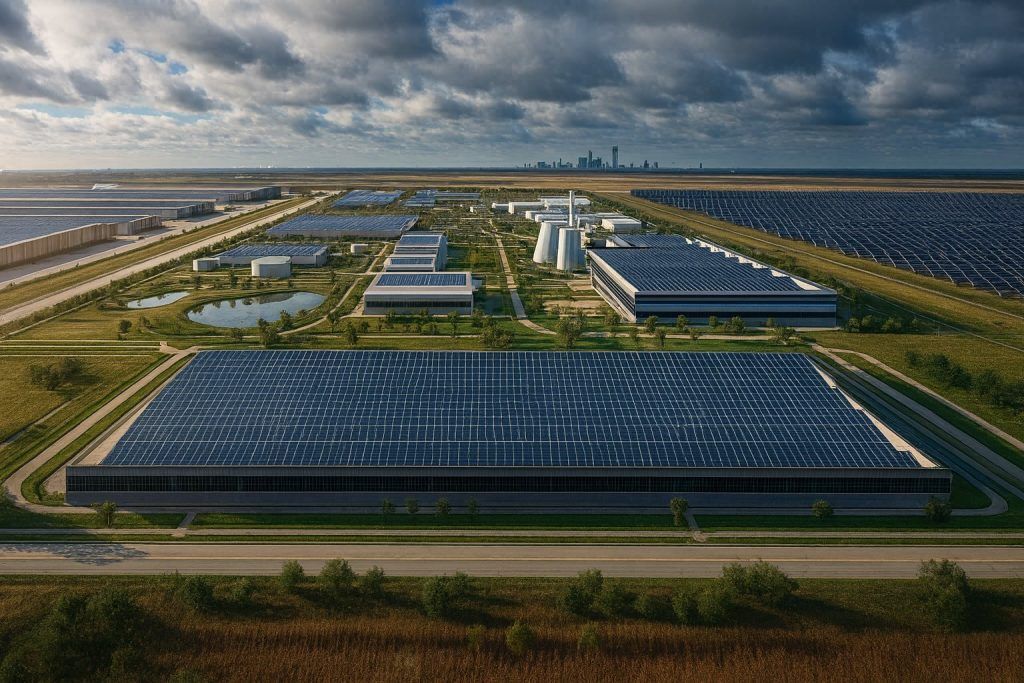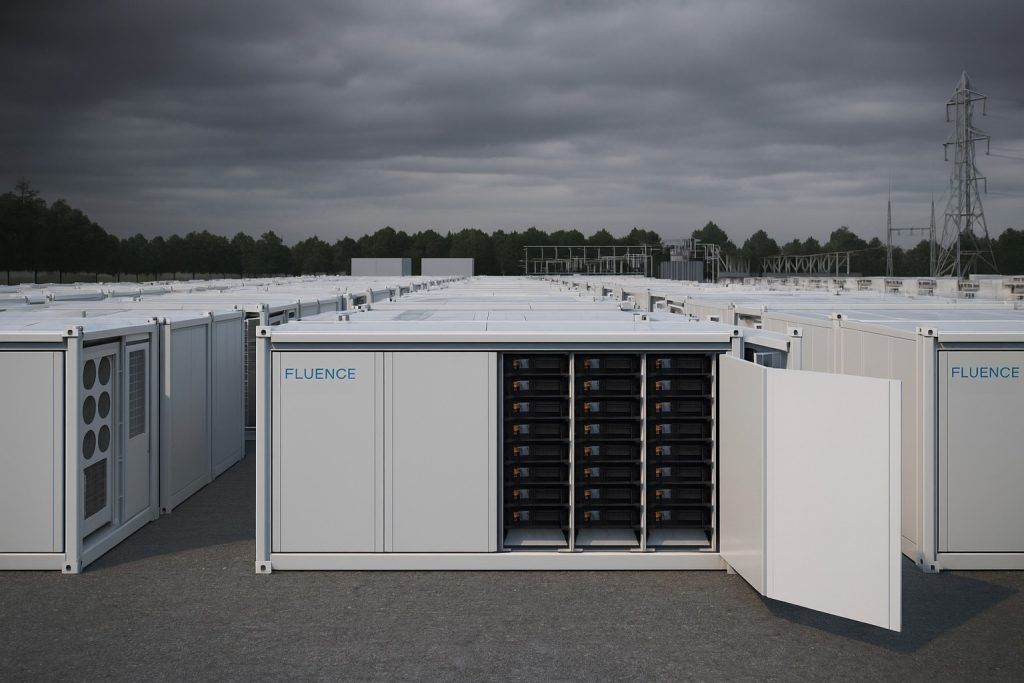- Stock snapshot (Oct 1, 2025): AES (NYSE: AES) closed around $15.34, up about 16.6% for the day [1]. The 52-week range is $9.46–$20.30 [2]. AES’s market cap is roughly $9.4 billion [3], while debt is very high (~$29 billion) [4]. The stock yields ~5.3% [5].
- Recent move: The late-September surge follows reports that BlackRock’s Global Infrastructure Partners (GIP) is in talks to acquire AES for about $38 billion (including debt) [6] [7]. AES shares jumped ~15% on Oct 1 after the Financial Times first reported the deal [8].
- Analyst consensus: Wall Street is cautiously optimistic. Eleven analysts have a consensus “Moderate Buy” on AES [9]. The average 12-month price target is around $24.67 (implying ~62% upside from today’s price) [10]. Ratings are mixed (7 Buy, 2 Hold, 2 Sell) [11]. For context, Reuters data shows a mean analyst score around “Hold” [12], reflecting the stock’s recent underperformance.
- Notable news (Sept 28–Oct 1, 2025): Major headlines include BlackRock/GIP takeover talks [13] (AES spiked ~15% on Oct 1 [14]), plus earlier reports (July) that AES was “exploring options including a potential sale” amid private-equity interest [15]. On Oct 1, Reuters also noted AES was leading S&P 500 gains after the takeover buzz [16].
- Earnings & outlook: AES’s core business has been solid. In Q2 2025, AES beat EPS estimates (reported $0.51 vs ~$0.40 expected) on renewables strength [17]. Management projects 2025 adjusted EPS $2.10–$2.26(above consensus ~$2.03) [18], driven by new solar/wind projects and regulatory rate increases. CEO Andres Gluski says AES is “well-placed” to meet surging demand from AI data centers in the U.S. [19].
- Industry trends: Power demand is skyrocketing thanks to data centers and AI. The U.S. Energy Information Administration forecasts record electricity use in 2025–26 [20], with renewables’ share rising from 23% (2024) to 25% (2025) [21]. Broad-based industry commentators note utilities’ capex plans are swelling – S&P Global projects >$1 trillion in U.S. utility investment by 2029 [22]. This AI-driven energy boom has unleashed a flurry of utility M&A (e.g. Constellation/Calpine, Blackstone/TXN) [23] [24]. Experts warn Big Tech’s data-center bids create planning headaches – as Advanced Energy United’s Jon Gordon puts it, utilities see a “huge proposed influx of…abstract projects that nobody knows anything about” [25].
- Peer comparison: AES straddles regulated utilities and renewables. Peers like NextEra, Duke, Dominion and smaller regulated utilities (CenterPoint, Calpine, Allete) are also benefiting from the power boom. Notably, GIP recently agreed to buy Allete (Minnesota Power) in a ~$6.2B deal, showing similar takeover appetite in the space [26]. Like AES, many peers have rich renewable portfolios; for example, CenterPoint Energy has raised its 2025 EPS forecast amid strong data-center demand [27].
Stock Price & Recent Trading
AES shares have rallied sharply in late September. As of Oct 1 the stock was around $15.3 – up over 15% on the day [28]. This was the largest single-day jump in nearly a year, triggered by takeover rumors. Trading volume spiked; Reuters notes AES was “boosting the S&P 500 utilities sector” as investors flocked in [29]. Before this move, AES had been in a year-long slump (down ~30% from last year’s high), but a minor rebound in recent weeks was dramatically accelerated by the BlackRock/GIP news. Over the last few days (Sept 28–Oct 1) the stock gyrated on deal speculation: it surged on Oct 1 after Bloomberg/FT reported GIP’s $38B bid, and market chatter kept it volatile.
According to Reuters market data, as of the last close (Oct 1) AES traded near the upper end of its recent range [30] [31]. The 52-week low was ~$9.46 and high ~$20.30 [32]. The company’s average daily volume is high (~8.9 million shares [33], tokenist) reflecting active trading. Key metrics: P/E ~9.3 (TTM) [34], forward P/E ~6.1 [35], and an attractive ~5.3% dividend yield [36], making AES a high-yield utility stock. Market cap stands around $9.37B [37], dwarfed by its debt.
Recent News & Headlines (Sept 28 – Oct 1, 2025)
- Oct 1, 2025: Deal talks spark rally. Reuters broke news that BlackRock’s infrastructure arm (GIP) “is in advanced talks to buy utility group AES” for ~$38B including debt [38]. The story (citing anonymous sources) said a deal could be announced in weeks. AES stock immediately jumped ~15% to ~$15.15 [39] on the news. The Financial Times first reported the takeover interest, and Reuters confirmed it. The takeover angle dominated headlines on Oct 1: another Reuters markets report noted “AES rallies sharply, leading S&P 500 gains” after the news [40].
- July 2025: Strategic review reports. Bloomberg News reported in early July that AES was “exploring options” including a sale, attracting interest from private equity and infrastructure firms. Reuters confirmed this on July 8 [41], causing AES to gain 14.3% in after-hours trading. Management declined to comment publicly. This signaled that AES’s board was open to strategic deals amid a sector M&A frenzy.
- Q2 Earnings (Aug 2025): In late July, AES reported Q2 results beating forecasts (as noted below). The company reiterated its 2025 guidance (long-term project contributions driving profits) [42]. While not within the specified date range, the upbeat Q2 call set the stage for investor optimism.
- Industry context: Sectorwide news also featured surge in data-center demand. A Reuters analysis on April 7 described how “Big Tech’s massive power demands” are pushing U.S. utilities to announce aggressive capex plans [43]. Regulators and utilities (e.g. PPL, Oncor, Evergy) are grappling with billions in data-center power requests [44] [45]. Such headlines reinforce AES’s narrative – as a power provider with a growing renewables unit, AES is positioned for this demand wave.
Financial Performance & Outlook
AES’s fundamentals have been solid recently. In Q2 2025 (reported late July), AES beat analysts’ profit estimates, reporting $0.51 adjusted EPS vs ~$0.40 expected [46]. The renewables segment drove growth: renewables revenue rose 4% to $644M, and the utilities business grew ~6% to $954M [47]. CEO Andrés Gluski highlighted that AES has secured “1.6 GW of signed PPAs with data centers since our first-quarter results”, making AES a leader in the fast-growing segment [48]. In practical terms, AES signed large solar deals with Meta (Facebook) to power data centers, underscoring its AI/data-focus strategy [49].
Looking ahead, AES reaffirmed 2025 guidance in its Q4 2024 call (Feb 28): adjusted EPS $2.10–$2.26 [50](above consensus ~$2.03). Management attributed this to new renewable projects and regulatory rate increases [51]. CEO Gluski reiterated demand tailwinds, noting “strong demand from the growing needs of AI data centers and new manufacturing plants in the US”, and that AES is “well-placed” to meet it [52]. This was echoed in February by Gluski: “we are well-placed to meet their demand for the shortest time to power” [53]. In short, AES expects more renewables ramp-ups and utility rate-base growth to boost 2025 profits.
Analysts’ models largely follow management. Market consensus price targets (around $24–25) embed these tailwinds. Some analysts note headwinds too – high leverage is often flagged as a risk. But on average, 7 of 11 covering analysts rate AES a “Buy” (with 2 hold, 2 sell) [54]. The average 12-month target is ~$24.67 [55]. (For comparison, one data aggregator shows a mean LSEG rating “2.57” – roughly a hold [56].) In practice, any takeover bid (like GIP’s) would significantly exceed these targets, reflecting a premium for control of AES’s assets.
Sector Trends: Utilities & Renewables
AES operates at the intersection of regulated utilities and renewable energy. The broader sector is booming on AI and green energy. U.S. power demand is projected to hit record highs in 2025 and 2026 [57] due to data centers and electrification. The U.S. Energy Information Administration forecasts renewables will supply 25% of U.S. power by 2025 (up from 23% in 2024) [58]. In practical terms, electricity demand is surging – one analyst noted that server farms could account for ~12% of U.S. grid demand by 2030 [59]. Utilities are responding by massive capex: Bloomberg (via S&P Global) reports U.S. utilities plan to invest over $1 trillion from 2025–2029 [60]. U.S. utilities’ capital expenditure has surged ~50% vs 2021 levels [61], reflecting grid upgrades and new projects.
This wave of demand and investment has triggered record dealmaking. In 2025 alone there are already >$89 billion in announced U.S. utility deals [62]. Recent megadeals include Constellation Energy buying Calpine for $16.4B and Blackstone’s fund agreeing to take Texas NM Power (TXNM) private for $11.5B [63]. AES’s potential sale is part of this trend: power companies with stable cash flows and clean-energy growth are coveted assets. Reuters notes “power companies are drawing investor interest as AI and data centers drive a surge in power demand, spurring a wave of dealmaking across the sector” [64].
Regulatory and operational experts point out challenges. Advanced Energy United’s Jon Gordon warns that so many proposed data-center power projects make forecasting difficult: “We’re seeing a huge proposed influx of these… projects that nobody knows anything about” [65]. Similarly, grid operators (PJM, ERCOT, etc.) are scrambling to plan for tens of gigawatts of potential demand [66]. AES, with its renewables backlog (~11.9 GW signed PPAs [67]) and regulated utility footprint (e.g. AES Indiana, Ohio), aims to be a beneficiary of this trend.
Peers & Comparisons
AES can be compared to a mix of utilities and independent power companies. Peers like NextEra Energy (major renewables owner), NRG Energy or Dominion Energy (utilities with renewables), and regulated regional utilities (e.g. Duke Energy, CenterPoint Energy, Alliant, PPL) share similar fundamentals. For example, CenterPoint recently raised its 2025 EPS forecast amid surging demand in Texas [68]. AES itself notes it operates generation and utilities in multiple countries (e.g. AES Indiana, AES Ohio) [69].
On the M&A front, GIP has been active in similar deals: it teamed with CPP Investments to acquire Allete (Minnesota Power) in a $6.2B take-private deal in 2024 [70]. AES’s renewable push is also comparable to peers: for instance, AES just announced a green hydrogen project [71], and other utilities (Duke, Dominion) are investing heavily in wind, solar, and storage.
Expert Views: Bulls and Bears
Bullish case: Proponents point out AES’s asset mix and growth pipeline. The combination of regulated utilities (providing steady cash) plus aggressive renewables development (providing growth) is attractive. CEO Gluski and others highlight AES’s strong backlog (11.9 GW of contracted green projects [72]) and new data-center PPAs, suggesting earnings momentum. The surging power demand from AI/data centers is viewed as a secular tailwind; as AES’s CEO said, growing AI needs are leading companies to turn to firms like AES that can deliver power “the shortest time to power” [73]. A takeover by GIP itself implies valuation upside. If BlackRock/GIP buys AES at ~$38B EV, that values AES at ~4.0× 2025 sales and ~18× forward EPS, a significant premium over current levels (around 9–10× trailing EPS). Some investors see the bid process as likely to push AES’s price well above $20 if completed.
Bearish case: Skeptics focus on risks. AES’s heavy debt load (~$29B) is often cited; the enterprise value is ~4× debt. Rising interest rates could make such debt heavier. Also, AES’s stock had underperformed peers (down ~35% in the past year) as investors worried about execution in renewables and lagging profitability. There is uncertainty whether the BlackRock deal will actually close (the Reuters report cautioned there’s “no guarantee” talks won’t fall apart [74]). Long-term, some analysts worry utilities may face political/regulatory challenges in pricing huge new investments, or that competition among utilities for big data-center projects could dilute returns (a point noted by industry surveys [75]).
However, at least for now the market is cheerily pricing in the takeover premium. AES’s short-term trajectory will likely follow this deal news flow. As one commentator put it, utilities “faces a new hunger for electrons” and consolidation appears inevitable [76]. If the GIP bid proceeds, AES investors will likely get a hefty payoff; if it doesn’t, AES still sits with strong growth prospects and a high yield, which bullish analysts may argue keeps the stock compelling.
Sources: Reuters (company news and market analysis) [77] [78] [79] [80] [81] [82] [83] [84] [85] [86] [87]; Breakingviews (context on utilities M&A) [88] [89]. These sources provide the data and expert quotes (e.g. CEO Andres Gluski and industry analyst Jon Gordon) cited above.
References
1. www.reuters.com, 2. www.reuters.com, 3. www.reuters.com, 4. www.reuters.com, 5. www.reuters.com, 6. www.reuters.com, 7. www.reuters.com, 8. www.reuters.com, 9. www.marketbeat.com, 10. www.marketbeat.com, 11. www.marketbeat.com, 12. www.reuters.com, 13. www.reuters.com, 14. www.reuters.com, 15. www.reuters.com, 16. www.reuters.com, 17. www.tradingview.com, 18. www.reuters.com, 19. www.reuters.com, 20. www.reuters.com, 21. www.reuters.com, 22. www.breakingviews.com, 23. www.breakingviews.com, 24. www.reuters.com, 25. www.reuters.com, 26. www.reuters.com, 27. www.reuters.com, 28. www.reuters.com, 29. www.reuters.com, 30. www.reuters.com, 31. www.reuters.com, 32. www.reuters.com, 33. www.investing.com, 34. www.reuters.com, 35. www.reuters.com, 36. www.reuters.com, 37. www.reuters.com, 38. www.reuters.com, 39. www.reuters.com, 40. www.reuters.com, 41. www.reuters.com, 42. www.reuters.com, 43. www.reuters.com, 44. www.reuters.com, 45. www.reuters.com, 46. www.tradingview.com, 47. www.tradingview.com, 48. www.tradingview.com, 49. www.tradingview.com, 50. www.reuters.com, 51. www.reuters.com, 52. www.reuters.com, 53. www.reuters.com, 54. www.marketbeat.com, 55. www.marketbeat.com, 56. www.reuters.com, 57. www.reuters.com, 58. www.reuters.com, 59. www.breakingviews.com, 60. www.breakingviews.com, 61. www.breakingviews.com, 62. www.breakingviews.com, 63. www.breakingviews.com, 64. www.reuters.com, 65. www.reuters.com, 66. www.reuters.com, 67. www.reuters.com, 68. www.reuters.com, 69. www.reuters.com, 70. www.reuters.com, 71. finviz.com, 72. www.reuters.com, 73. www.reuters.com, 74. www.reuters.com, 75. www.reuters.com, 76. www.breakingviews.com, 77. www.reuters.com, 78. www.reuters.com, 79. www.reuters.com, 80. www.reuters.com, 81. www.tradingview.com, 82. www.reuters.com, 83. www.reuters.com, 84. www.reuters.com, 85. www.marketbeat.com, 86. www.marketbeat.com, 87. www.reuters.com, 88. www.breakingviews.com, 89. www.breakingviews.com







